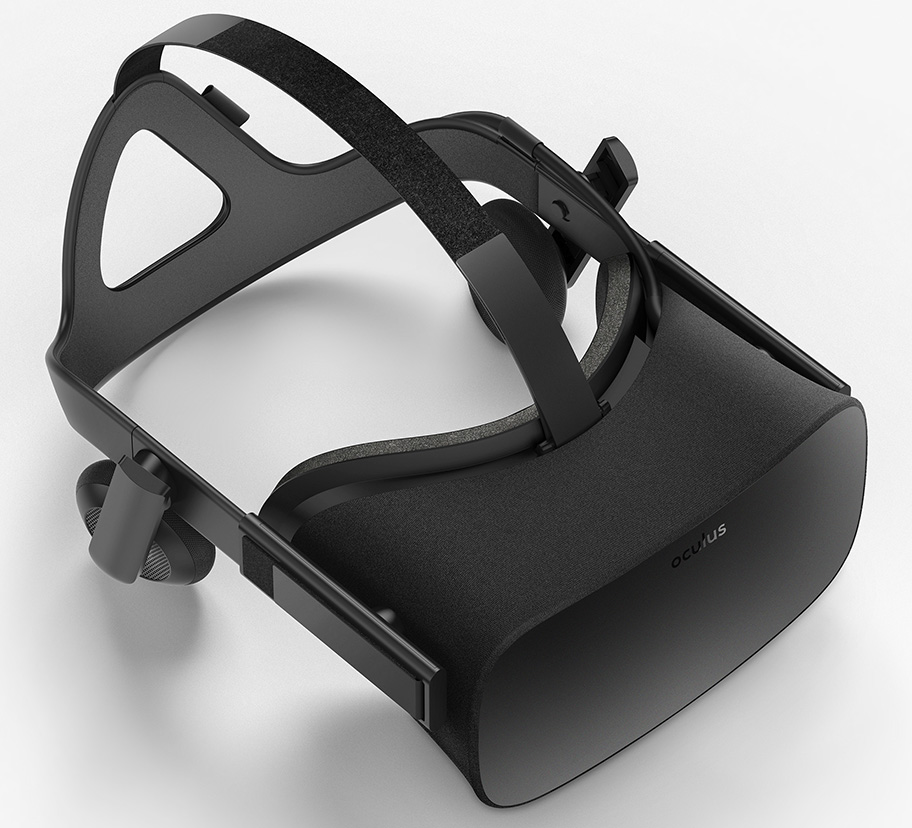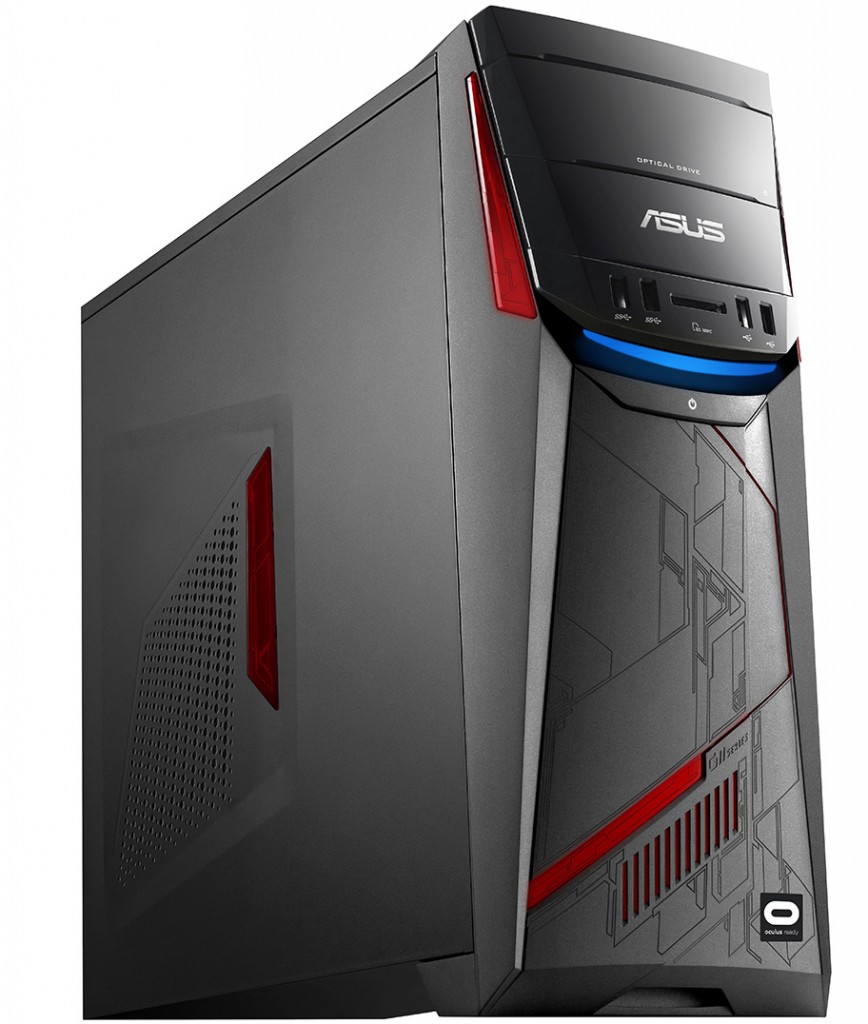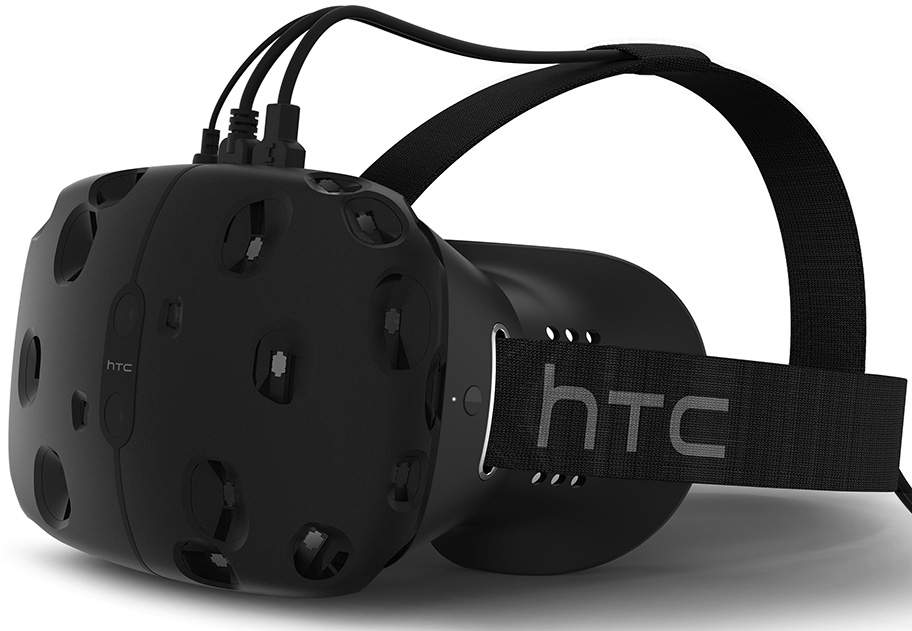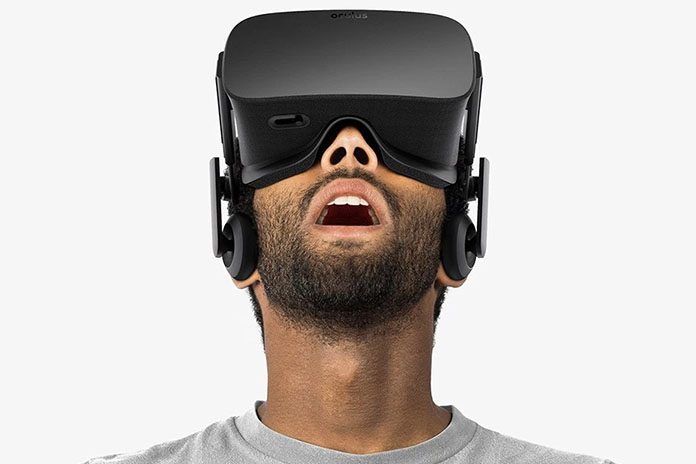It’s really happening. After years of development and accumulated anticipation, virtual reality is finally going to be a thing. Production Oculus Rift headsets ship next month, with the HTC Vive scheduled to follow in April, and that’s just the beginning. Investment giant Goldman Sachs believes the market for virtual and augmented reality will be worth 80 billion by 2025.
VR has been around in various forms for decades, so the technology isn’t entirely new. My first taste happened back in the mid-90s with a Virtuality headset at a local Internet gaming cafe. Even then, the promotional images featured the now-ubiquitous upward gaze with mouth agape:

That early experience was as cheesy as the image looks. The graphics were much worse than what traditional PC games offered at the time, and the tracking was laggy enough to cause motion sickness for some people. Although my stomach never churned, the novelty wore off after a few minutes, and I was soon back to Doom II multiplayer on a standard PC.
The Virtuality setup was among a handful of VR options available in that era. All were flawed, and none of them stuck. The difference with the new generation is that the hardware is now good enough to convincingly put you inside virtual worlds. That changes everything.
Oculus Kickstarted the VR renaissance in 2012 with a crowd-funded developer kit. The first Rift goggles were fairly crude, but the project blew past its funding goal within a day, fueled by enthusiasm that quickly spread throughout the industry. A vastly improved second dev kit was released in 2014 and went on to sell well over 100,000 units. Subsequent prototypes have honed the headset since, culminating in the final production version available for pre-order.

The finished Rift headset features two low-persistence OLEDs built specifically for VR. Instead of illuminating the backlight constantly, they flash each frame briefly before returning to darkness. This strobing effect dramatically reduces motion blur, allowing the displays to maintain a sharper, more believable image.
While traditional LCDs refresh at 60Hz, the Rift’s OLEDs run at 90Hz. Increasing the refresh rate reduces input lag, further helping the displays keep up with rapid motion. The higher update frequency also makes the visuals much smoother overall, a critical component to maintaining the sense of immersion in VR.
With a resolution of 1080×1200 per eye, the Rift totals just over 2.3 megapixels. That may not sound a lot at a time when 4K monitors and TVs are becoming common, especially since the screens are right up against your eyes, but it’s amazing how quickly the gaps between the pixels fade when you’re actually playing a game. The experience is so engrossing that it’s easy to look past the imperfections.
In some ways, it’s actually a good thing that the Rift’s resolution isn’t any higher. Matching the refresh rate requires pumping out frames at a steady 90 FPS, a tall order at 2160×1200. And maintaining that frame rate is vitally important, because VR amplifies even momentary lapses. Performance hiccups disrupt the connection to the virtual world around you, ruining the heightened sense of presence that VR provides. The effect is much more jarring than stuttering on a traditional desktop monitor sitting a couple feet away.
To ensure a good experience, Oculus suggests at least an NVIDIA GeForce GTX 970 or AMD Radeon R9 290 graphics card. The recommended system specs also include a quad-core Intel Core i5-4590 processor or better, plus 8GB of RAM. Add it all up, and you’re looking at spending about a grand on a complete rig.

ASUS has multiple options if you want a pre-built PC, including a special version of our G11CD gaming desktop that’s certified as Oculus Ready right out of the box. This machine pairs GeForce GTX 970 graphics with a Core i5-6400 processor, 8GB of RAM, and a terabyte of storage. It rings in at $1049, and pre-ordering the Rift knocks $100 off that price.
The DIY crowd can piece together whatever it wants to meet the recommended spec—or go beyond it. Myriad combinations are possible with ASUS components like the Strix GTX 970, which is a good starting point for upgraders who want to give older systems a graphics boost.
If you want to start from scratch, the sweet spot right now is an overclocked Core i5-6600K on a motherboard like our Z170-A. NVIDIA’s VR SLI tech lets developers assign a GPU to each eye to improve performance, so a pair of Strix 970s has tantalizing potential. Or you could opt for a single, more powerful card like the Strix 980 Ti. We won’t know the ideal graphics configuration until final headsets and games are available, but exceeding the recommended spec should lead to a better experience. Expect PC DIY to explore the topic of VR performance in more depth as finished hardware rolls out.

Backed by Valve and built by HTC, the Vive is the other main attraction in the PC’s VR arena. Although the system recommendations haven’t been revealed, the Vive uses the same displays as the Rift, so expect similarly steep specs.
Like the Rift, the Vive tracks movement with extremely low latency. But the experience is very different. While the Rift is designed for a seated, stationary subject, the Vive lets you stand and roam within a set area. It will also ship with dual SteamVR controllers that bring more of your movements into virtual reality. Oculus’ comparable Touch controllers aren’t due until later this year, so the Rift comes with an Xbox One gamepad right now.
The two front-runners aren’t the only options, either. StarVR is working on a headset with dual 2560×1440 displays and a much wider field of view, Razer is pushing the open-source OSVR initiative, and Fove is developing a solution with integrated eye tracking. Then there are all the mobile-oriented VR efforts and Sony’s Project Morpheus for the PlayStation 4. The list goes on.
So far, I’ve briefly demoed the Vive and logged multiple sessions with several versions of the Rift. Those forays into VR were spread over months and involved different software, so it’s difficult to compare them directly. That said, they’ve literally been jaw-dropping—I’ve been caught looking up in wonder with my mouth hanging wide open. I’ve also grinned giddily while casually looking down at the apex as I clip a corner at ludicrous speed in Project Cars, frantically shaking my head scanning for bogeys in the heat of an Eve: Valkyrie dogfight, and expertly slicing through digitized produce in the VR equivalent of Fruit Ninja.
It’s not just me; virtual reality has a similar effect on others. The line for our VR demo at PAX Prime perpetually ran around the corner and was often populated with repeat visitors eager for another dose. Players left our demos at ROG Unleashed and CES with similarly wide eyes. When even jaded tech journalists come away impressed, you know VR is something special.

Perhaps the most exciting thing about VR is the fact that it’s not just for games. Virtual reality gives storytellers a new medium that can pull the audience deeper into the drama than ever before. It also has considerable potential for education, businesses, and communication. Imagine learning about the first moon landing by riding shotgun in the Apollo 11 spacecraft, visualizing a new building by exploring its virtual blueprint, and talking to someone across the world like they’re in the same room. The possibilities are limitless.
There are, of course, some practical limitations. The $600 Oculus Rift is an expensive proposition, especially when you factor in the cost of a VR-ready PC. Pricing alone puts it outside the realm of casual consumers and into the domain of serious enthusiasts. And that’s OK, because early adopters have always paid for the privilege of being on the cutting edge of new technology.
The software ecosystem is another constraint. Although countless games, applications, and experiences are currently in development, the selection of polished products is sparse. But that seems fair considering the Rift hasn’t even shipped yet. The fact that so much software is available in some form already is a testament to the popularity of those early developer kits.
VR is still in its infancy, so plenty is still to come. In fact, Oculus is already working on a next-generation headset that promises to take things to the next level. And there’s plenty of reason to be optimistic. Many of the biggest challenges associated with VR have already been tackled, and the trajectory of relevant technologies points toward much greater realism. The pixel density of displays continues to rise, especially for the smaller screens used in headsets, paving the way for truly lifelike detail. At the same time, graphics horsepower continues to grow, thanks in part to the fact that workloads scale well with additional cores, GPUs, and entire cards. Combine those trends, and the future of virtual reality looks very real.
Virtuality image credit: Dr. Jonathan D. Waldern

